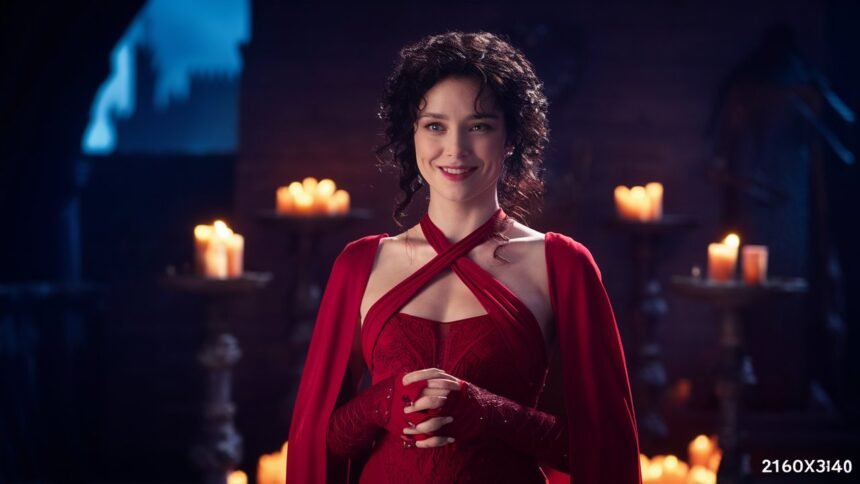Melisandre of Asshai, the Red Priestess, remains one of the most enigmatic and polarizing figures in Game of Thrones. Cloaked in crimson robes and wielding the power of R’hllor, the Lord of Light, she navigates the treacherous political landscape of Westeros with an unwavering conviction in her divine mission. Her character is a tapestry of prophecy, manipulation, and redemption, leaving audiences both fascinated and conflicted. This article delves into the complexities of Melisandre’s role, exploring her origins, motivations, and legacy. From her shadowy magic to her ultimate sacrifice, we unravel the mysteries of this fiery priestess and her impact on the battle for the Iron Throne—and the survival of humanity itself.
The Origins and Mission of Melisandre: A Priestess from Asshai
The Power of R’hllor: Melisandre’s Divine Abilities
Central to Melisandre’s influence are her supernatural abilities, granted by her fervent worship of R’hllor. She demonstrates mastery over fire, using it to send cryptic messages and execute her enemies. Her most infamous power, however, is shadowbinding—a dark art that births assassins from her own life force, as seen in the murder of Renly Baratheon. Additionally, she employs glamours, illusions that mask her true appearance, hinting at her ancient age. Yet, her powers are not infallible. Misinterpretations of her fiery visions lead to catastrophic mistakes, such as endorsing Stannis’s doomed campaign. This duality—divine power coupled with human fallibility—anchors her character in ambiguity, challenging audiences to question whether she is a savior or a charlatan.
Prophecies and Visions: The Lord of Light’s Guidance
Melisandre’s actions are guided by visions in the flames, a conduit for R’hllor’s will. These prophecies drive pivotal moments in the series, from the resurrection of Jon Snow to the identification of the Night King’s threat. However, her interpretations are often flawed. Her initial belief in Stannis as Azor Ahai proves disastrous, while her later recognition of Jon and Daenerys as key players underscores the elusive nature of prophecy. This section analyzes how Melisandre’s reliance on visions reflects the broader theme of fate versus free will in Game of Thrones. Are her actions divinely ordained, or do they stem from a desperate need to validate her faith? The answer lies in the tragic gaps between her certainty and reality.
Controversies and Moral Ambiguities: The Dark Side of Devotion
Melisandre’s unwavering devotion to R’hllor often plunges her into moral darkness. Her role in Shireen Baratheon’s burning—a sacrifice meant to appease the Lord of Light—stands as one of the series’ most harrowing moments. This act epitomizes the tension between her spiritual mission and ethical boundaries. Critics argue that her willingness to commit atrocities in the name of faith mirrors real-world religious extremism, while defenders view her as a tragic figure burdened by the weight of saving humanity. This section delves into her complex morality, exploring how her actions force viewers to grapple with uncomfortable questions about sacrifice, fanaticism, and the cost of victory.
The Final Sacrifice: Melisandre’s Redemption at Winterfell
Melisandre’s arc culminates in the Battle of Winterfell, where she returns to fulfill her ultimate purpose. Igniting the Dothraki swords with enchanted fire and guiding Arya Stark to confront the Night King, she plays a decisive role in humanity’s survival. Her final act—walking into the dawn and crumbling to dust—symbolizes both penance and peace. Having acknowledged her past errors, she embraces death as a release from centuries of striving. This redemption, though bittersweet, reframes her legacy: a flawed servant of fate who ultimately tips the scales toward light.
Legacy of the Red Priestess: Impact on Westeros and Beyond
Melisandre’s influence extends far beyond her death. Her actions alter the trajectories of key characters, from Jon Snow’s resurrection to Stannis’s downfall. Moreover, her presence introduces Westeros to the power of R’hllor, challenging the dominance of the Faith of the Seven. This section examines her lasting imprint on the series’ lore and themes. Was she a catalyst for unity against existential threats, or a harbinger of chaos? Her legacy, like her character, resists simple categorization, embodying the paradox of hope and destruction that defines Game of Thrones.
Conclusion
Frequently Asked Questions (FAQs)
Q: How old was Melisandre truly?
A: Though never explicitly stated, hints suggest she was centuries old, using glamours to maintain a youthful appearance.
Q: Why did Melisandre abandon Stannis?
>>>A: After realizing her misinterpretation of Azor Ahai’s identity, she fled to reassess her purpose, later recognizing Jon and Daenerys as key figures.
Q: Was Melisandre inherently evil?
A: Her morality is ambiguous. While her actions caused suffering, her endgame was humanity’s survival, complicating simplistic judgments.
Q: What was the significance of Shireen’s sacrifice?
A: Intended to grant Stannis victory, it instead highlighted Melisandre’s moral limits and the dangers of blind faith.
Q: Why did Melisandre die after the Battle of Winterfell?
A: Having fulfilled her purpose, she chose to relinquish her prolonged life, symbolizing redemption and acceptance of mortality.







